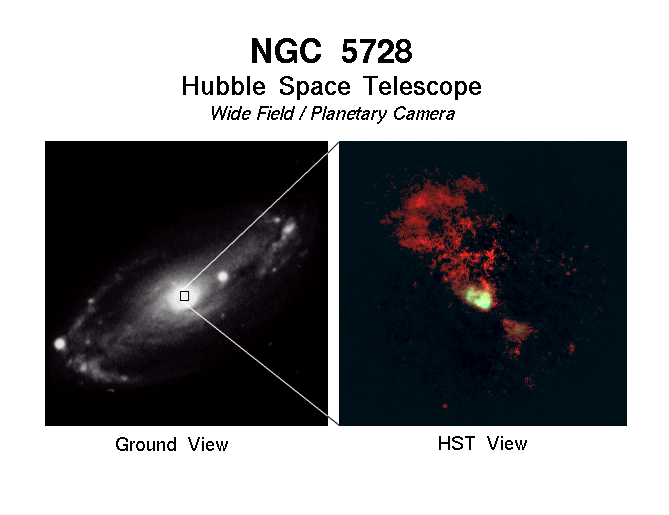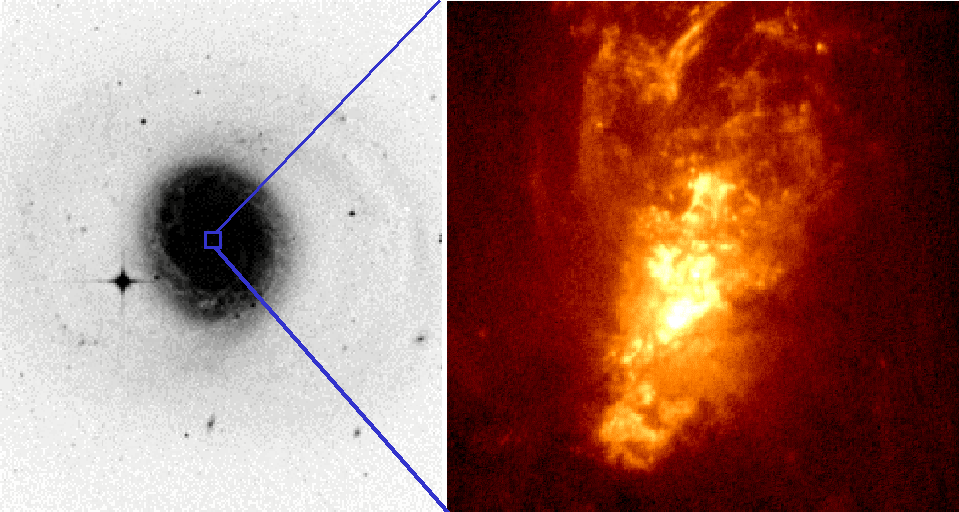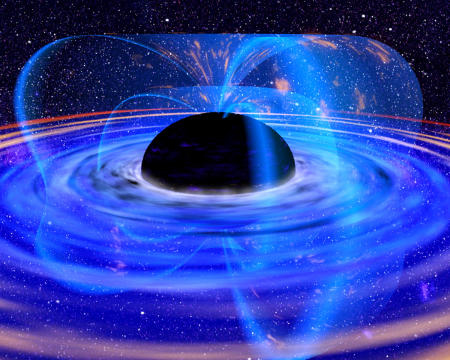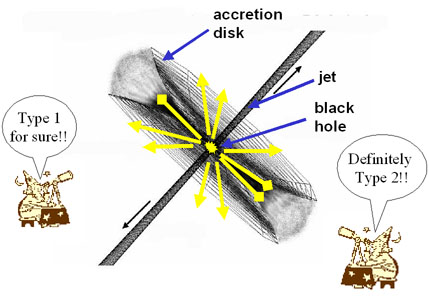"Unified" models of AGNs
Some Seyfert galaxies, called Type 1, seem to give us a clear view right down to
the nucleus:
 |
Picture of NGC 5728. The expanded view of the center to the right
shows a very bright, very compact source (not distinguishable in the picture from a point)
and cones of excited gas that are illuminated by this central object. The cones are like
the shafts of light you see from the headlights of a car driving through the fog.
Something is confining the direction the light escapes (for the headlight, its reflector),
and the material in the way is lit up by the light, showing us the pattern it is allowed
to escape in. |
While others have so much material in their centers that it is hard to see what is
going on. When we can't see the nucleus directly, we call them Type 2.
 |
Picture of NGC 1068, a Seyfert galaxy where the surrounding material
completely hides the black hole from direct view. (From STScI) |
 |
We think that most, if not all, of the difference between these two
cases is the tilt relative to us of the disk of matter falling onto the central black hole
and surrounding it. This difference has to do only with the direction toward us from the
AGN, not necessarily with the way the AGN is constructed. Here is an artist's concept of
an AGN black hole (shown by its event horizon) and this disk of rapidly rotating matter,
trapped in the huge gravitational field and spiraling inward to oblivion. |
| Here is a view of two astronomers (on planets in different systems
and in different directions) disagreeing about the nature of a Seyfert galaxy. Too bad
they have to be in different parts of the galaxy, or they could have a good argument! (illustration
by G. Rieke) |
 |



